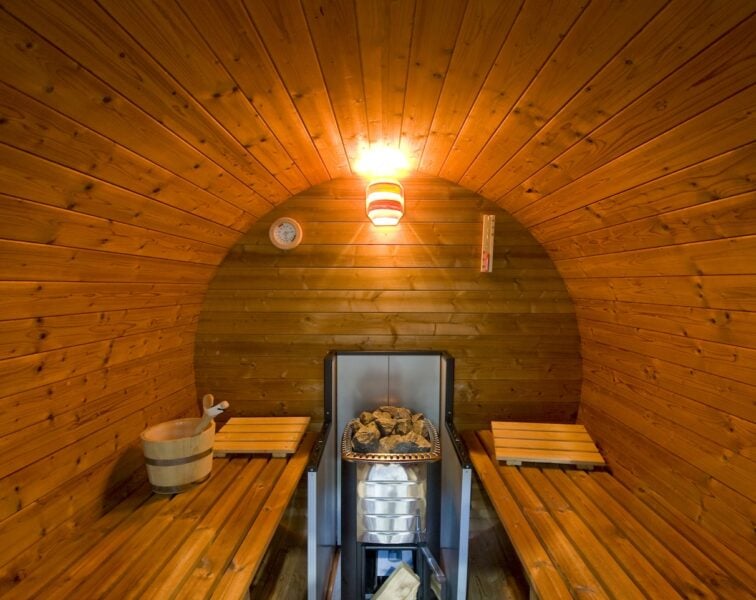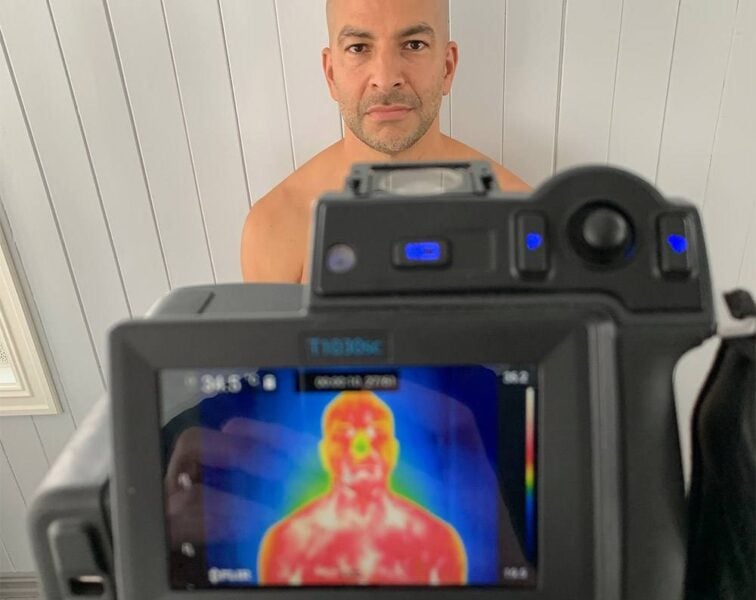This audio clip is from AMA #16: Exploring hot and cold therapy, originally released on October 12, 2020.

Show Notes
Possible mechanisms conferring the longevity benefits of sauna, and how it compares to exercise [1:02:15]
Overall, the data is robust in support of heat therapy in the following manner:
- Dry sauna
- 20 minutes or more each session
- Four times a week or more
- At about 170 degrees Fahrenheit/80 degrees Celsius
Possible mechanisms conferring benefit:
Mimics exercise—
- This type of sauna activity seems to mimic cardiovascular exercise
- E.g., Heart rate gets up to 150 beats per minute in a sauna
What about other things such as growth hormone and heat shock proteins?
- There are increased growth hormone levels
- Increased prolactin
- Increased cortisol,
- And other hormones likely increase: norepinephrine, renin activity, white blood cell count, and heat shock proteins
Theoretical experiment:
- Randomize people to four hours a week of sauna under these above listed conditions
- Match them with another group that does four hours a week of exercise at the same heart rate as in the sauna conditions
- And have a third group do neither (control group)
- Follow them for 20 years
What would Peter and Bob predict the outcome to be?
- Bob: “I think that you would see a lot of similarities in the outcome”
- Peter thinks an experiment like this could be done in animals and would predict both the sauna group and exercise group would do significantly better
- Peter: “But is there a difference between those two? That’s the question that’s interesting.”



